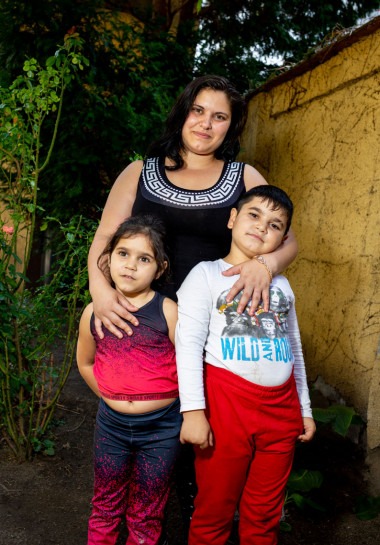On November 3, 2022, a presentation of an independent study “Solidarity with Ukrainian refugees in Hungary: practices and attitudes based on a population survey” dedicated to the situation of refugees from Ukraine in Hungary took place in Budapest. The researchers found that, unlike the majority of refugees, the Transcarpathian Roma are forced to face negative institutional practices.
Among the problems highlighted by the researchers are the reluctance of many humanitarian organizations to place Roma in refugee centers, the lack of any opportunity to rent private housing, a serious lack of information and, in general, the absence of any significant assistance from the Hungarian authorities and humanitarian organizations.
At the presentation, it was said that even Ukrainians of average income in Budapest often face difficulties in renting housing. Some landlords find it too risky to rent out their apartments to refugees. In the case of the Roma, the refusal to rent an apartment is common even when it is not about families with many children, but, for example, a mother with a child. An example of this attitude is the story of Anita Gabor, who arrived in Hungary in February, immediately after the start of the Russian military invasion of Ukraine:
“Since March, together with my husband and children, we have been living in a shelter on Danko Street. Since I have epilepsy, it was hard to be in a noisy environment with a lot of people, so we were even given our own small room. However, now we have to leave there due to the fact that the shelter is overcrowded and there are not enough places for everyone. We have been looking for an apartment for many weeks, but so far without success. As soon as the owners see that we are Roma, and even more than that – with children, they immediately refuse.”

(magyarnarancs.hu)
“They try not to notice the Roma, separating them as much as possible from the rest of the refugees, which could be seen already in the first weeks of the war. Many Roma who arrived in Budapest tried to register and get a place at the BOK sports arena, which was converted into a refugee center, but the workers of the center were afraid that if they settle Roma with other Ukrainians, this would only lead to rejection or conflicts, and therefore they were denied. Other large temporary shelters follow a similar policy. Instead of settling in humanitarian centers, there is a practice that is not officially reported. It involves Roma being sent to the immigration police and then taken to state-appointed refugee shelters, usually located in rural areas. They were closed in recent years after the 2015 refugee crisis, and now have reopened due to the war in Ukraine. Such centers mainly accommodate Transcarpathian Roma. They are away from potential jobs and any other opportunities,” – people said at the presentation.
Roma activists who participated in the study reported that government humanitarian organizations and border areas treated Roma refugees differently from other Ukrainians. According to an employee of a Roma NGO, a blatant example of unequal treatment of Roma was the order by the mayor of the border town of Zahony to close the tents of the municipality and the Reformatus charity service after a train with about 300 Roma refugees arrived at the city station. It is also reported that in the first days of the war, Roma families had to wait days for permission to cross the border, and they did not receive any assistance from official bodies.
The problem of education and integration of Roma children remains acute. According to the authors of the study, the Hungarian school system was completely unprepared to receive Ukrainian children. Educational programs focused on social integration have not been developed in recent years, and there are no state resources for advanced training in this direction, which affected the readiness of educational institutions to accept refugee children. In particular, this problem affected Roma children, as most of them were unprepared for school and did not have even the most basic knowledge of the school curriculum.
This is how Agnes Maczne Pletser, the head of the school volunteer program for refugee children from Ukraine, described the situation with Roma children: “We faced a severe school trauma. In addition to the fact that 60% of the Roma children who came to us could neither read nor write, the children suffered from anxiety and traumatizing memories, for example, that a teacher always puts them in the back of the school desk, that he hits them on the head if they don’t behave quietly, that if they don’t have money for taxis, as they call minibuses, they have to walk eight kilometers to school every morning, and they get very tired along the way.”
The authors of the study noted that many Ukrainian Roma do not have access to the healthcare system and cannot receive medical care in Hungary, so they are forced to ask their relatives to send them the necessary medicines from Transcarpathia.









 Feedback
Feedback